A Sliammon Elder has created a beautiful record of herself and her Sliammon teachings. She has helped make media history as well by participating in crafting a digital medium that is circular and guided by the visitor’s curiosity — a good match for Indigenous storytelling. The result is a gift of learning to future generations.
The project, which is free to visit here, took more than four years to complete. It is the first title to be produced by RavenSpace, a new online publishing platform with ties to the University of British Columbia.
At the centre of As I Remember It: Teachings (Ɂəms tɑɁɑw) from the Life of a Sliammon Elder, is Elsie Paul, a speaker of her people’s mother tongue and a keeper of their knowledge rooted in the thousands of years they’ve lived along what is now called B.C.’s Sunshine Coast. She shared her story in a 2015 UBC Press book of a similar name (Written As I Remember It: Teachings (Ɂəms tɑɁɑw) from the Life of a Sliammon Elder). But this multimedia presentation comes to life in a way that wasn’t possible in print.
The project has four authors, Elsie Paul, Harmony Johnson, Davis McKenzie and Paige Raibmon. The latter three, in 2016, began talking to Paul about a digital project, listening to her stories and figuring out how best to transfer them into the essays, videos, audio clips and animation features they posted online. There are maps and instructional materials, as well.
The book is designed so that readers aren’t given a specific starting or stopping point. They can jump around and learn something new each time they open it. On the screen are tabs for four chapters: Territory, Colonialism, Community and Wellness. Under each are multiple write-ups and media entries.
One of the hardest decisions, according to McKenzie, was figuring out where it was appropriate to cut Paul’s words and where it wasn’t. Some of the material is considered sacred and some is important to Paul personally, so chopping that apart just wouldn’t be okay.
Under the Territory tab, for example, the reader finds “Where I Come From.” “And it’s a very long blog,” said McKenzie. “But Chi-chia actually gave the story in one sitting, in one breath. I think Paige and Harmony sat down and asked her ‘Where are you from?’ and she spoke for 45 minutes. It’s a very long story, but it was really important to keep it all together because it covers a lot of different aspects.”
Chi-chia is the Sliammon word for grandmother. Both Johnson and McKenzie are Elsie Paul’s grandchildren. Johnson has served in policy and executive roles for B.C. First Nations. McKenzie is a professional communicator. Raibmon is a history professor at UBC.
Paul is still alive — in case you’re wondering — and in pretty good health (she was born in 1931). But she wanted to ensure the teachings she’s learned through her long life live on.
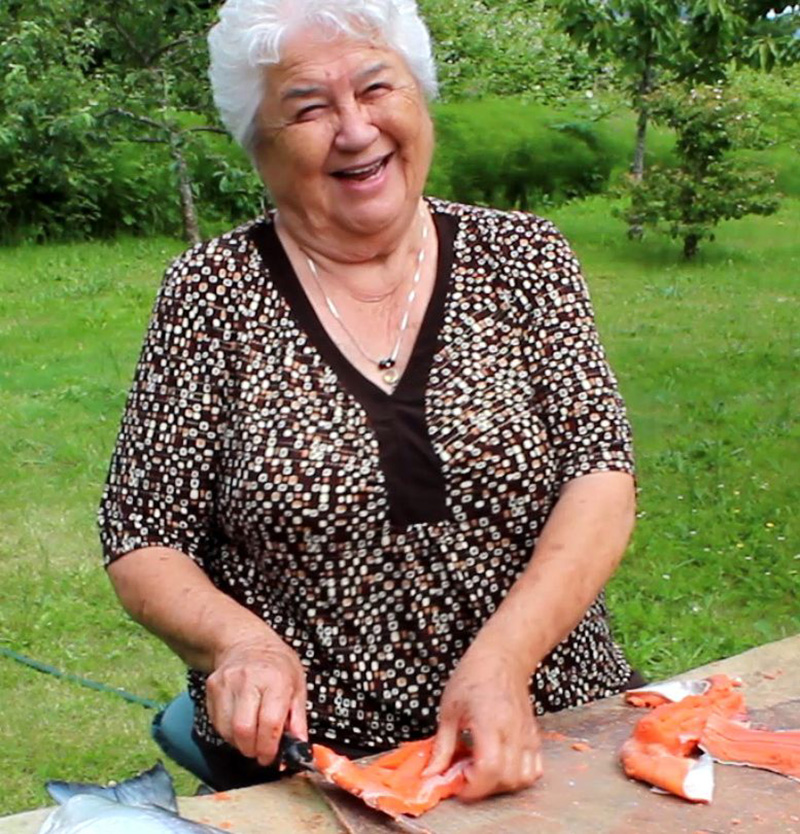
“It’s your job to look after yourself,” Paul says right from the start of the book. “To be well from inside and to teach that to your children, to teach that to your family, to set that example.” There is a video attached offering the chance to see and hear her speak these words.
“It’s very important, our tɑʔɑw. ‘Tɑʔɑw’ means ‘the teaching.’ That we all carry the teaching, what we learned from our ancestors, the traditional teaching, the traditional values. ‘Ɂəms tɑɁɑw’ — ‘our teaching,’ that’s what that means,” says Paul.
Sliammon is the English word for ɬaʔamɩn (or Tla’amin) — a point Paul makes in the book. So out of respect, now that readers know this, ɬaʔamɩn will be used in this story from now on. One of the key issues that came to light while making the book, according to the authors, was property ownership, particularly in ɬaʔamɩn tradition.
Raibmon points to the distinction “between research on Indigenous people and research with Indigenous people. And research on Indigenous people is out.” In the academic world, in the past, she explained, when a colonial scholar went to Indigenous communities to study them, the researcher often thought they owned the information they had collected. That view is changing, but slowly.
To remedy the information ownership problem in the online world, the authors used “canoe protocol,” explained McKenzie. Knowledge keepers in the ɬaʔamɩn community helped them come up with the idea, which has been the way for ɬaʔamɩn people for centuries and could be applied, they believed, online, too. And so here is the message that greets the newly arrived reader:
“Welcome, guests, to As I Remember It, a digital presentation of my life and the teachings of my grandparents and people. My name is Elsie Paul. My ancestral name is qɑʔɑχstɑles. ʔíːmòt tᶿ qʷɑ́yɩgən tᶿ kʼʷʋ́nɑnɑpɛ. ʔíːmòt θ qʷʋ́lʼ kʼʷʋ́θ níniǰi tᶿ púkʷ. I’m very happy to see you all. It’s good that you come to see me about my book.
“This site is ɬaʔamɩn territory: it operates according to ɬaʔamɩn protocol. In other words, the regular rules of the internet do not apply here. ʔəms tɑʔɑw (our teachings) are very precious, and to protect them we invoke ɬaʔamɩn guest-host protocol to govern this site and its visitors.
“What do we mean by guest-host protocol? As ɬaʔamɩn, as coastal people, we travel by boat. When we visit another place, we identify ourselves, describe our relationship to the host, make clear our intentions, and ask to come ashore. When we serve as hosts, our role is to protect the community and territory, and to nurture and affirm our collective identity as qɑyəwmɩxʷ (human beings) through respectful conduct.
“Once a guest is invited to come ashore, they are fed and well treated, their obligations are explained to them, and for the duration of their visit they abide by ɬaʔamɩn laws. In this case, we remind you that the stories, photos, videos and language shared on this site are not simply content or information. Rather, they are our belongings, the intellectual property of either myself or the ɬaʔamɩn people. As our guest, we welcome you to take a moment to identify your intentions and to confirm your understanding and willingness to abide by ɬaʔamɩn protocol.”
The reader of Paul’s story then has the opportunity to click either, “Come Ashore — I Agree” or “Take Me Back to Cyberspace — I Disagree” depending on their willingness to abide by ɬaʔamɩn law.
“We want to try and shift people’s relationships to knowledge about Indigenous people,” explained Raibmon. “It’s important to know about Indigenous peoples’ history, but just as important, or maybe even more important, is really understanding ɬaʔamɩn ideas about knowledge... what it’s for, who it’s for, who it belongs to and how to treat it respectfully.”
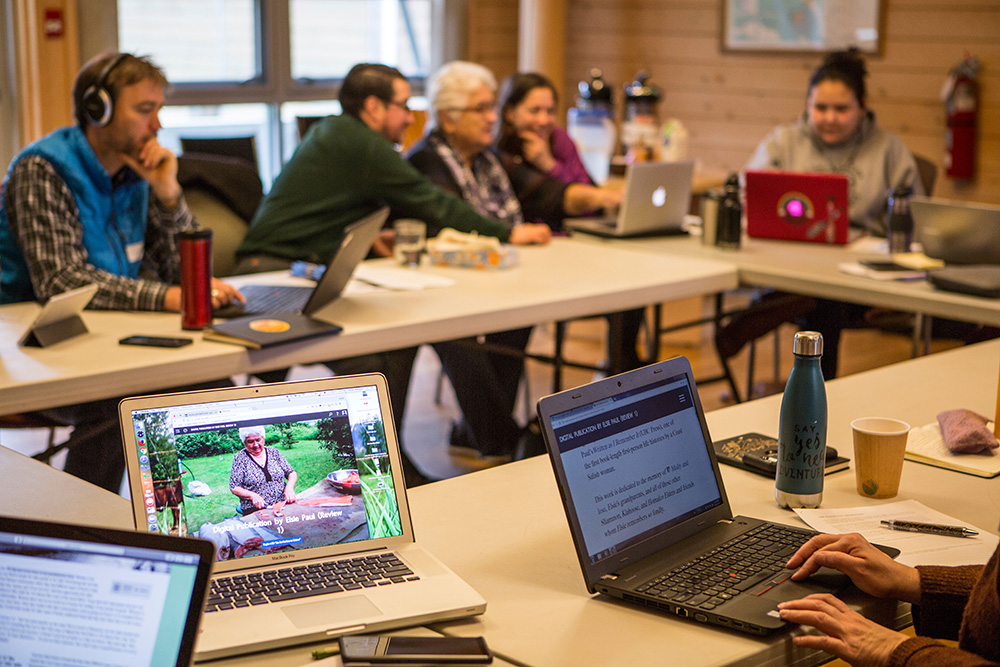
The ɬaʔamɩn people are not dead, nor are they dying, emphasized McKenzie. His grandmother’s motivation was not to crystallize the knowledge she held and freeze it in. To do so would be what McKenzie calls a “salvage mentality” that many academics work from. Instead, the goal is to keep the knowledge as a record for ɬaʔamɩn people to continually draw upon.
“As the Māori scholar and educator Linda Tuhiwai Smith writes, ‘Indigenous research’ — of the sort this book aspires to embody — ‘seeks to recover a peoples’ path to well-being, to find the new/old solutions that restore Indigenous being in the world. The impacts are part of an intergenerational long game of decolonization, societal transformation, healing and reconciliation, and the recovery of a world where all is well,’” notes McKenzie in his Digital Remediation essay in the Our Process section.
Once inside, the reader will find stories of joy, and stories of sorrow. Elsie’s life has not been easy, but she maintains her humour and grace despite it all.
An example of tragedy she has endured is the story of young Elsie’s dog Patsy, found in the Colonialism chapter. The RCMP sometimes rounded up the ɬaʔamɩn peoples' dogs and shot them. One day, Paul was made to tie her dog to the post for the RCMP to carry this out.
“And so the police wouldn’t chase the dogs all over, we all had to have our dogs tied to a post down towards the beach. And the police would come and just shoot them off, pick them off — shoot them. Oh, I was so upset about my Patsy. I loved that dog! And I don’t know who took care of the remains. Probably the parents or the grandparents took care of the remains,” read her words on the page.
“Yeah, it’s a wonder I’m still sane, if I am — I don’t know,” she says at the end, punctuating the grief with a little humour.
Some of the other heavy subjects Paul talks about are the treatment of First Nations people on the steamship she sometimes rode with her fisherman grandfather (always being forced to ride with the baggage on the lower level); residential school, which she did attend for a few years; and the treatment of ɬaʔamɩn people by police (which, you can imagine, was very disrespectful).
Of course there is beauty as well. Paul has a lot of fond memories about her childhood and traditional activities like berry picking, clam digging, root digging, fishing, community dances. The sources of her knowledge are rich and varied. She tells about the strength (physical and mental) of the Elders she grew up around, their teachings about healthy pregnancy and caring for babies, her grandmother’s handmade dolls, the work she did as a social worker in her territory for 24 years.
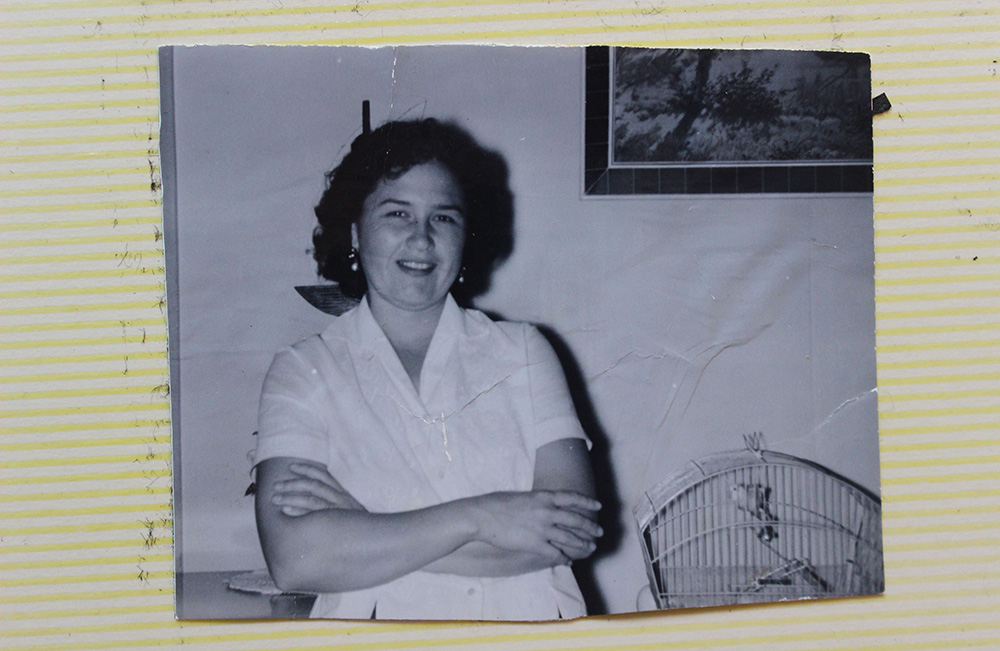
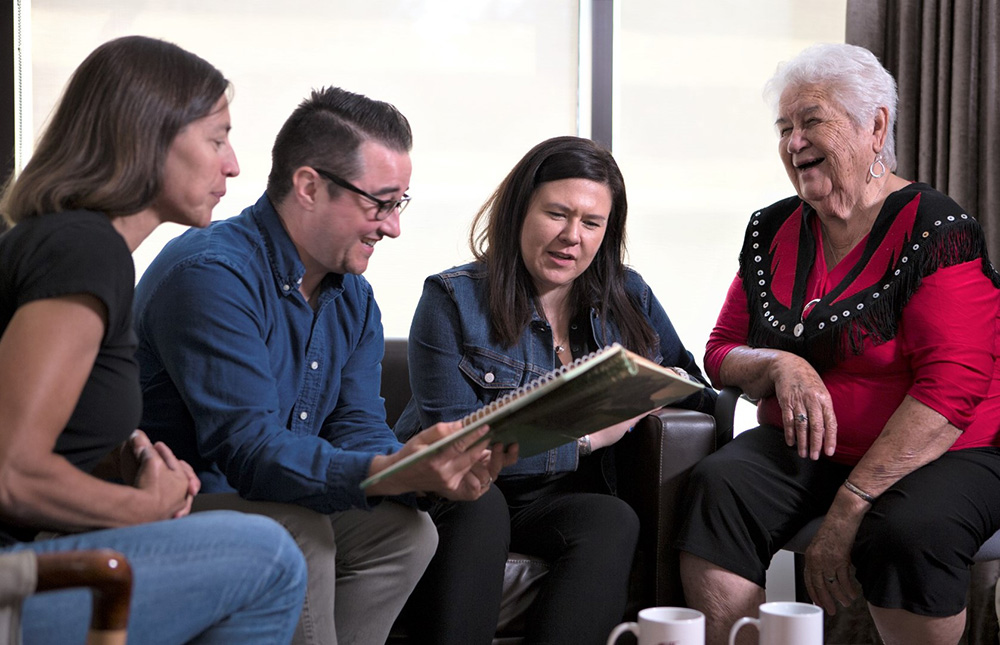
Some of Elsie Paul’s stories are illustrated not with photos and videos, but animations. McKenzie, who helped design the digital book, said there were two reasons animations were sometimes used to illustrate Elsie’s points.
“Animations are for things we didn’t have photos for, or wouldn’t be appropriate to have photos,” he said.
“Twins are Gifted,” “He Got His Spirit Back” and “The Last Walk” are stories told with animations. The first two didn’t have photos that could be used (because the stories come from a time before photography existed), and the last is a funeral ceremony that has strict protocol around it, so using photos would be an act of disrespect, he said.
According to Raibmon, the concept of putting a book online in interactive form represents a new area of the academic arts. The “digital humanities” are “exploding within the university,” she said.
The material for the book was peer reviewed by scholars, like other academic works, but Paul had her own priorities, said grandson McKenzie.
“There’s this whole concept of objective peer review, and that was not acceptable by Chi-chia’s standards. She said, ‘We’re not doing that.... You can do that, too, but who you need to run the book by is our up-and-coming people who are learning the language and going to be passing on the culture.’”
And that’s what they did. Paul named a number of young ɬaʔamɩn people from the community, who then gathered together and gave the authors feedback on what they’d like to see in the book, and what was important to them. And they even helped the authors identify ancestors in photos that the authors couldn’t, said McKenzie.
The book really has something for everyone because it’s so well-rounded, said Johnson. “I think everyone will get something from it. You know, if you’re a teacher, there’s the kindergarten to Grade 12 resources. For kids, there’s the animations, which I thought were really great. I like that on the site you can listen to recordings. And I really like that we have done the traditional knowledge labels across the site, as well as the opening protocols where people have to agree in terms of the intention we had for the material.”
Paul declined to be interviewed for this article, simply because she felt she had already said enough. That’s hard to argue with given how filled the book is with her knowledge. And the wisdom of an Elder is something to be respected, too. Knowing when to start talking and when to stop is a teaching a lot of us could use.
A parting thought from Paul, though. At one point in As I Remember It she brings her story right up to date, speaking about her own feelings in a way that might teach others to reach deep and avoid negativity in difficult times:
“You know, myself, even though I remember all those teachings, sometimes I start to backslide and I start to feel sorry for myself and, ‘Oh, I’m getting old, I’m getting so old. You just can’t do this anymore. I can’t do that anymore.’ And that kind of gets you down. Kinda eats away at you. And if you allow it — if I allow that — I’m gonna sit here on my pity pot and, ‘Nobody ever comes to visit me and nobody ever does this for me and nobody ever' — and I tell myself, ‘Smarten up!’”
As for RavenSpace, more projects are on the way from the digital publisher, which was founded at UBC Press with grant support from the Andrew W. Mellon Foundation. Up next is Ḵa̱n’s hiłile (Making it Right): A Collaborative Reframing of Kwakiutl Film and Audio Recordings with Franz Boas, 1930.
Explore As I Remember It: Teachings (Ɂəms tɑɁɑw) from the Life of a Sliammon Elder by clicking here. ![]()
Read more: Indigenous, Art, Media



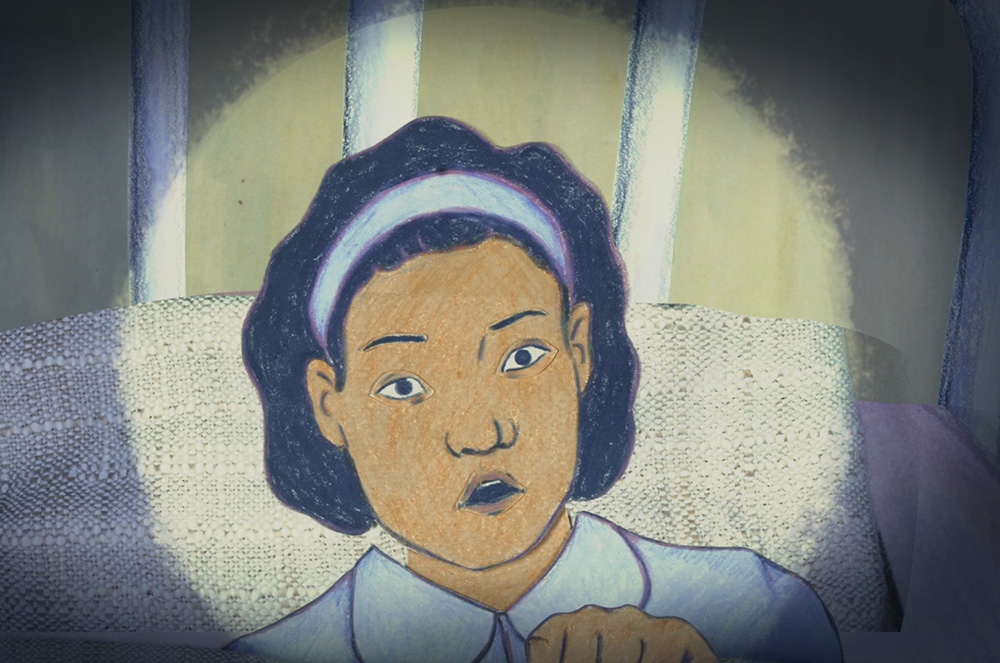












Tyee Commenting Guidelines
Comments that violate guidelines risk being deleted, and violations may result in a temporary or permanent user ban. Maintain the spirit of good conversation to stay in the discussion.
*Please note The Tyee is not a forum for spreading misinformation about COVID-19, denying its existence or minimizing its risk to public health.
Do:
Do not: